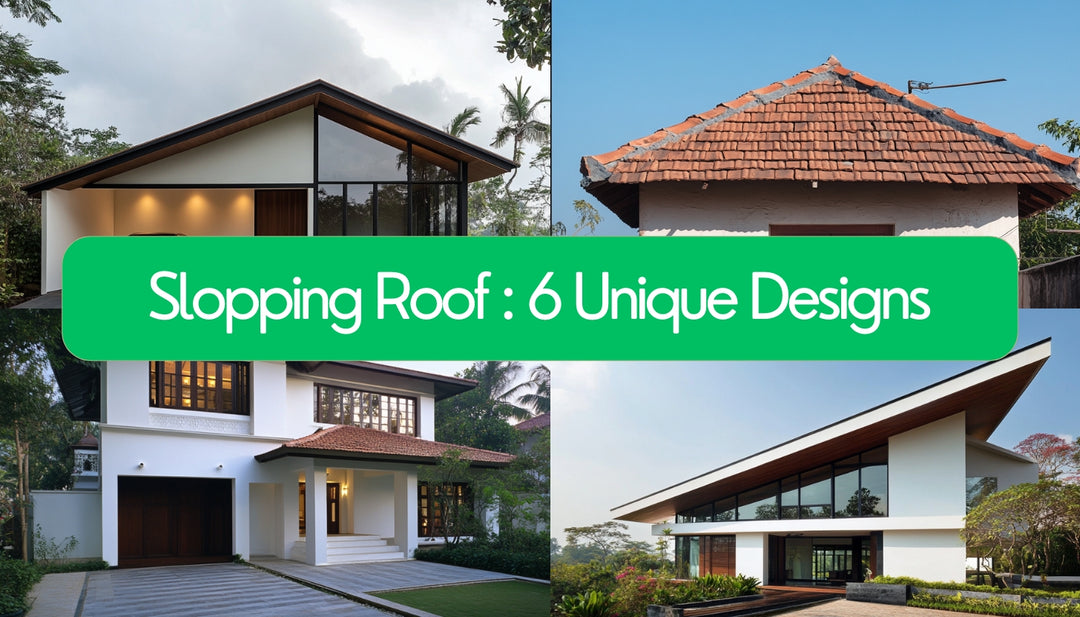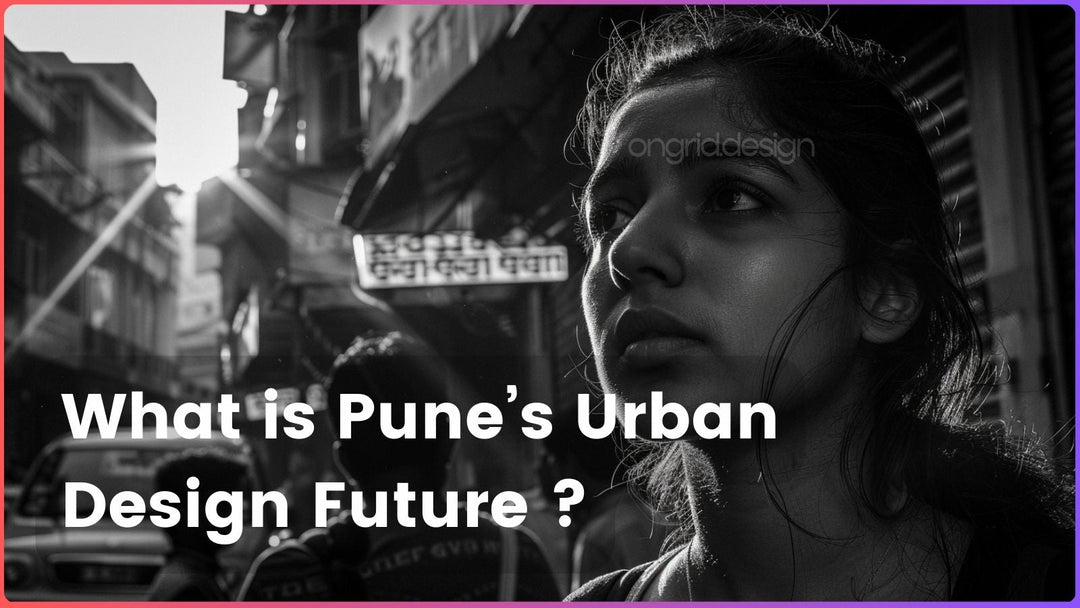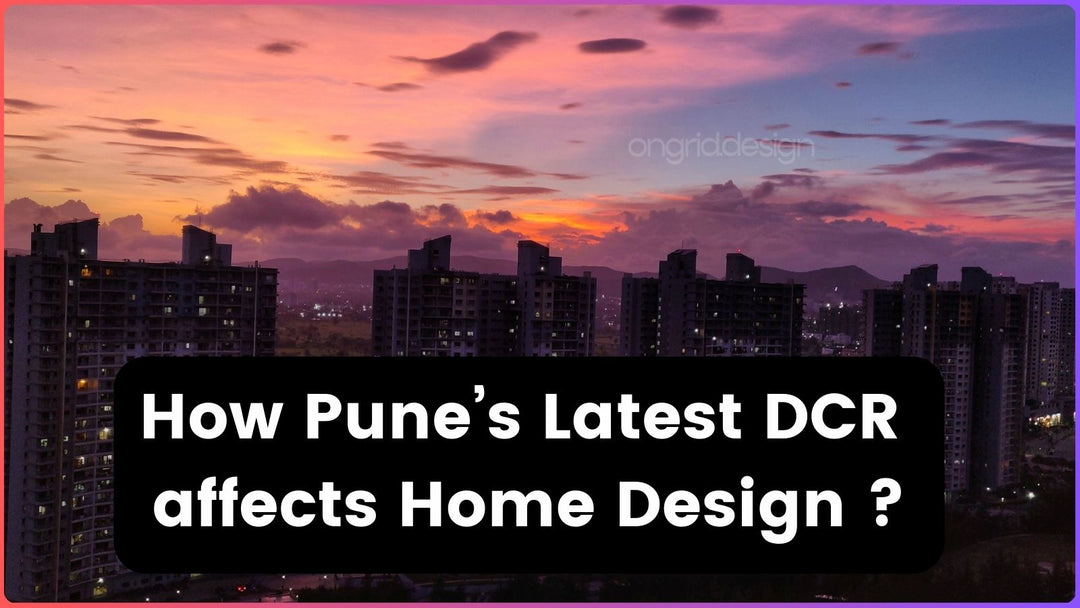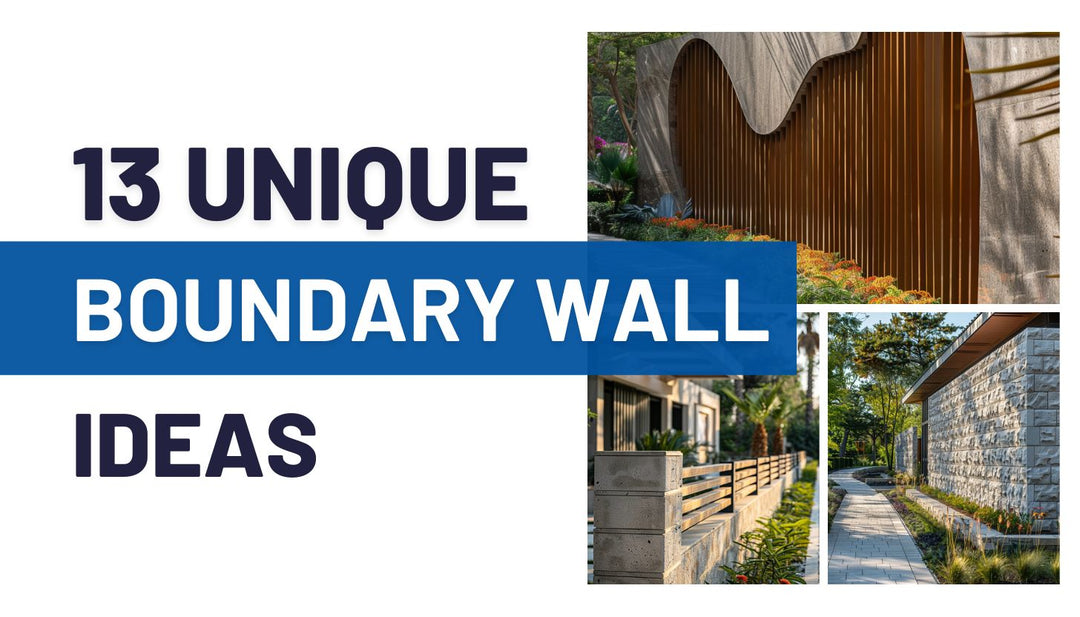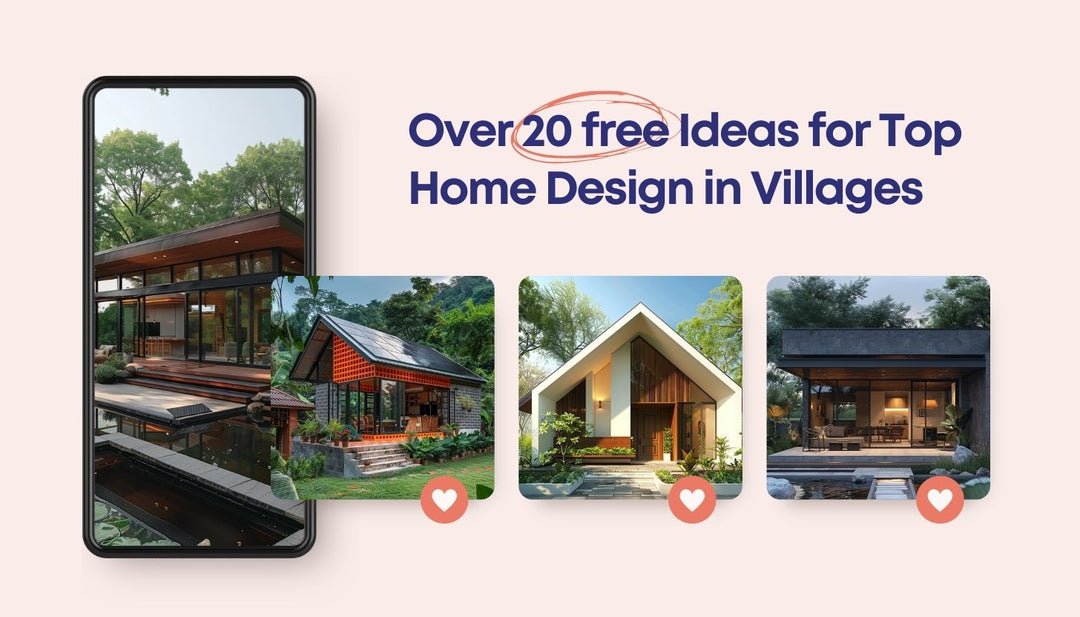The Cost Factor: An in-depth analysis of the costs involved in elevation design changes and how to budget for them
Key Takeaways
- Elevation design costs include material expenses, labour charges, professional fees, approvals and miscellaneous expenses.
- Location, project size, design complexity and quality of construction influence overall costs.
- Careful budgeting through multiple quotations, contingency buffers and prioritising needs is advised.
- Online architectural services offer huge cost benefits through lower consultation fees and optimised design.
- Investing in quality materials and specialised designers results in greater long-term value.
- Comprehensive planning considering key elements and expert guidance enables maximising returns on investment.
Introduction
Home elevation designs play a major role in enhancing the aesthetics and adding value to any property. As you plan to elevate the look and feel of your home, it is crucial to have clarity on the costs involved. Understanding the cost implications will help you create a realistic budget and make informed decisions through the project.
This comprehensive guide offers an in-depth analysis of the key cost elements, the factors impacting them and tips on smart budgeting for elevation design projects.
What is home elevation?
Elevation refers to the external face or façade of a building. Home elevation design involves architecturally enhancing the exterior surfaces like the front, side or rear views through creative use of various materials, textures, patterns and lighting.
Homeowners often choose to revamp elevations to refresh the look, match a changed interior theme or landscape, correct structural issues or simply modernise and raise the property value.
Check out 50 unique simplex elevation design ideas for Indian homes.
Why invest in elevation upgrades?
- Curb appeal: Contemporary finishes and details create an inviting facade that instantly improves aesthetics.
- Personalisation: Elevation changes help display homeowner personalities through customised designs.
- Longevity: High-quality materials can withstand weathering and last for decades with lower maintenance.
- Energy efficiency: Strategic changes like shading fixtures and insulated walls optimise indoor comfort.
- Enhanced value: Thoughtful elevation upgrades can boost a home's worth and saleability.
The Components of Elevation Design Cost
There are several costs involved in executing any elevation design project. Being aware of these key elements will help you allocate the right budgets.
Material Costs
The choice of materials for elevation finishes plays a big role in determining the overall project cost. Here's a look at typical price ranges for common materials:
- Stonework
- Natural stone
- Sandstone - Rs. 100 to Rs. 150 per sqft
- Limestone - Rs. 120 to Rs. 180 per sqft
- Granite - Rs. 150 to Rs. 250 per sqft
- Artificial Veneer Stone - Rs. 100 to Rs. 200 per sqft
- Brickwork
- Clay bricks - Rs. 100 to Rs. 180 per sqft
- Fly ash bricks - Rs. 80 to Rs. 140 per sqft
- Designer bricks - Rs. 150 to Rs. 300 per sqft
- Woodwork
- Cedar or Redwood - Rs. 100 to Rs. 300 per sqft
- Pine or Fir - Rs. 50 to Rs. 100 per sqft
- Teak wood - Rs. 300 to Rs. 500 per sqft
- Stucco - Rs. 100 to Rs. 200 per sqft
- Concrete - Rs. 100 to Rs. 180 per sqft
- Glass
- Float glass - Rs. 100 to Rs. 200 per sqft
- Frosted or hed - Rs. 150 to Rs. 300 per sqft
- Metal Sheets
- MS sheets - Rs. 100 to Rs. 150 per sqft
- Anodised aluminium - Rs. 200 to Rs. 250 per sqft
- Tiles
- Ceramic - Rs. 20 to Rs. 100 per sqft
- Porcelain - Rs. 30 to Rs. 150 per sqft
- Natural Stone - Rs. 50 to Rs. 200 per sqft
- Mosaic tiles - Rs. 100 upwards per sqft
The rates above are approximate price ranges for materials only. Additional costs will apply for fixtures, finishes, labour, taxes.
Cost-saving tip: Opt for locally available stones like sandstone in Rajasthan or Uttar Pradesh or granite in south India, which incur lower transportation expenses.
Labour Costs
In addition to material expenses, sufficient labour budgets need to be accounted for.
- Masons - Rs. 300 to Rs. 500 per day
- Carpenters - Rs. 500 to Rs. 800 per day
- Helpers - Rs. 200 to Rs. 400 per day
Wages vary based on location, scale of work, expertise required and more. Typically urban cities see higher labour costs compared to rural areas.
Pro tip: Hire contractors who can provide end-to-end elevation construction services instead of assembling individual labourers to optimise costs.
Design and Consultation Fees
Professional architects and designers charge between 1-2% of the total project cost as their fees.
For simpler designs or only 3D visualisations, smaller firms may offer basic services for as low as Rs. 1000 per elevation. Freelancers tend to be more economical than large established offices.
Check out our online architectural design services to get started
Licensing and Permits
Most states in India require building permits and NOCs for external elevation changes. Typical costs are:
- Municipal NOC - 1% to 2% of total budget
- CERSAI approval - Rs. 5000 to Rs. 10000
- Building permit fees - Vary across cities, usually Rs. 1000 upwards
Do verify local laws and budget accordingly. Working with experienced architects can help navigate approvals smoothly.
Learn about the approval drawing process for home elevations in India
Miscellaneous Expenses
Aside from the major costs above, allocation for miscellaneous and contingency expenses is advisable. Small unaccounted costs like:
- Equipment rental
- Transportation
- Safety gear
- Food and supplies for labourers
- Electrical or plumbing changes
- Protective mesh or scaffolding
These can potentially add up to 5-10% over initial budgeting. Have at least a 5-10% buffer for unforeseen expenses.
Factors Influencing Elevation Design Costs
The overall expenditure on elevation design varies significantly based on several aspects:
Geographical Location
Costs are markedly different across urban and rural regions.
- Tier 1 cities like Mumbai and Delhi see the highest rates due to higher land values and labour costs.
- Smaller towns and remote areas have more economical pricing due to lower wages and rents.
There is also variance across states.
- Rajasthan and Gujarat, known for stone carving, have abundant local supply of sandstone and limestone.
- Tamil Nadu and Andhra Pradesh have lower labour charges in general.
Choose locally available materials to optimise costs.
The Scale of the Project
Elevation upgrades for an independent house will be more economical compared to that of large apartment complexes.
Larger projects come with discounts due to bulk purchase of materials and economies of scale. Smaller homes under 1000 sqft can see costs upwards of Rs. 4000 per sqft, while for over 2500 sqft, it may reduce to under Rs. 3000 per sqft.
Tip: For budget homes, focus the facelift on the front elevation, which offers maximum visibility. Scale down sides and back to optimise costs.
Choice of Designer or Architect
Hiring experienced architects and designers naturally demands higher fees than new firms. However, entrusting your home to specialised experts ensures:
- Higher quality standards
- Better value engineering
- Smoother execution with their vendor networks
For smaller projects, online design services offer cost-effective solutions with lower fees.
See how online architects reduce costs
Complexity of Design
Simplicity and minimalism reduce costs. Intricate stone jaalis, ornate stucco mouldings, and carvings. can enhance aesthetics but also shoot up the budget.
Prioritise essentials for functionality first, then assess how to smartly incorporate decorative elements that add maximum value within the budget.
Tip: If the budget is tight, add intricate details only in key visible sections instead of the entire exterior.
Quality of Materials and Construction
High-quality materials and specialised masonry work understandably add to the costs but offer durability. However, opting for the cheapest products and inexperienced workers can prove counterproductive.
Cheap paints and seamless waterproofing solutions may lead to early leakages and damage. Unskilled masons increase the chances of faulty construction needing reconstruction.
Therefore, evaluate options and find the optimal balance between reasonable costs and reliable quality.
How to Budget Effectively for Elevation Changes
Careful planning, research and smart approaches can help maximise value from the money invested in home façade upgrades.
Get Multiple Quotes
Shop around and get quotations from at least 2-3 suppliers or contractors for every major material and service. This provides a clear idea of price ranges and allows you to compare and negotiate better deals.
Prioritise Needs over Wants
Focus first on functional changes like structural repairs or leak prevention. Cosmetic enhancements like external lighting or ornamental mouldings can be optional based on funds availability.
Phase out plans into primary needs, nice-to-haves and optional extras for smarter budget allocations.
Factor in Contingency Amounts
Add buffer amounts for cost overruns that often happen. Allocate at least 5-10% as a contingency reserve over initial estimates for handling unforeseen expenses.
Consider Life Cycle Costs
Look beyond just installation costs. Penny-pinching on quality can prove more expensive over the long term in maintenance and repairs.
Invest adequately in weatherproofing and opt for reputed brands of paints, sealants, and fittings. Their higher durability offsets greater upfront costs when viewed across the entire lifecycle.
Get Professional Guidance
Hire qualified architects specialised in façade design. Their expertise can help identify the most cost-efficient solutions for your needs, avoid potential pitfalls and derive maximum value from your budgets.
Online design services offer huge cost benefits here.
The Role of Online Architectural Design Services
Online design platforms like Ongrid revolutionise elevation design by making professional architectural services affordable and accessible.
Customised 3D visualisations and elevations can be designed from the comfort of your home for a fraction of typical market rates. With lower overheads and advanced technologies, online architects reduce costs significantly.
Benefits of online design services:
- Lower Consultation Fees - Due to minimal operational costs, online architects charge only Rs. 1000-2000 per elevation design.
- Discount on Total Project Cost - Overall costs are reduced by 5-10% as online firms work with verified budget construction partners.
- DA Approval Support - Online teams are well-versed in getting building approvals across India.
- Greater Value Engineering - Tech-based processes enhance the optimization of material costs.
- Quality Assurance - Dedicated project managers ensure effective execution as per design.
Learn how online architectural design services are the future.
Case Study: A transformation story of a traditional Indian home through modern elevation design
Murali, a homeowner in Bangalore, wished to uplift his modest 800 sq ft traditional house through a contemporary elevation design.
He hired Ongrid and collaboratively finalised plans for a sleek exterior with exposed brick, large frameless windows, glass railings and sun shades. Crisp white stucco contrasted with grey oxidised MS frames created a trendy industrial look.
See the remarkable before and after transformation pictures here.
Despite a tight budget of Rs. 7 lakhs, Ongrid's expertise ensured optimal value engineering.
Cost optimisation techniques used:
- Brickwork construction over additional plastering
- Blending MS frames with cost-effective wood shades
- Focusing detailing only on the front elevation
- Sourcing negotiable rates through contractor network
- Smart material management and labour timelines
The contemporary elevation design radically enhanced aesthetics and added significant long-term value at just Rs. 8000 per sqft.
Dos and Don'ts for Planning Your Elevation Design Budget
Recommended Practices for Optimising Costs
- Prioritise needs over optional beautification elements
- Allocate contingency funds to handle surprises
- Invest in quality materials and finishes
- Work with experienced specialised architects
- Source multiple vendor quotations to compare rates
- Use online design services for best-value engineering
Pitfalls to Avoid
- Opting for the cheapest material options
- Compromising on weatherproofing quality
- Changing plans frequently mid-construction
- Underestimating labour costs
- Not accounting for maintenance down the road
- Trying extensive customisation in budget homes
Following the right approaches can help balance aesthetics and costs for maximum returns.
Conclusion
Elevating your home's external façade can greatly amplify its visual impact and market value. However, comprehensive planning considering all cost elements is vital for effective execution within budget constraints.
Assess your needs, explore material and labour rates in your area, get professional guidance, and allocate smart buffers to account for surprises. With diligent homework and expert support, you can transform your home's outlook without breaking the bank.
Get in Touch
Get in touch with Ongrid to benefit from personalised elevation design services at affordable online rates.
Our expert architects can help analyse your needs, provide practical recommendations and create stunning 3D visualisation to guide your home façade makeover while optimising costs through value engineering.





